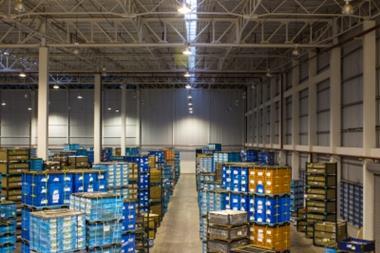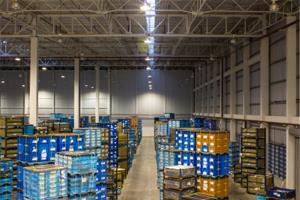Risk managers should keep a handle on their supplier relationships as this can lead to significant gains

The corporate risks posed by a potential supply chain failure are leading more risk managers to keep a close handle on their supplier relationships and they are finding, in some instances, that significant gains can be made in the process.
The latest spate of negative headlines about UK-based corporates that have been found wanting in their governance of suppliers or have suffered operational upheaval owing to a supply chain issue is driving this change. Among the latest examples are the alleged unfair treatment of suppliers by Premier Foods and Diageo, which have inspired a government-backed review. Further, last year, some of the world’s leading vehicle manufacturers, including Toyota, Honda and BMW, had to launch an industry-wide product recall, after sourcing a defective airbag from a single, tier one supplier.
Risk managers are under pressure to manage an ever-widening range of strategic issues, especially corporate performance, governance, sustainability and risk. These all demand a good grasp of every aspect of an organisation, including the supply chain, which is usually a significant area of spend and untapped savings, both financial and emissions. Nowadays, the supply chain can represent as much as 80% of a company’s controllable costs and often have a savings potential of about 20%. It is also often a prime source of corporate risk that requires careful governance.
However, supply chain decisions are often taken at a relatively low level. Their strategic consequences may not be immediately apparent, so they are not subject to rigorous risk management processes.
Careful design
The architecture of the supply chain must be carefully developed in terms of shipping/supply routes, location of sources and warehouses. The right design will deliver cost, performance and emission responses that customers demand. These should not be left to emerge by happenstance.
All points on a supply chain network, not only sources, need to be selected, and relationships developed with care, to ensure an optimal architecture and cost profile. Suppliers must be selected primarily for their capability to deliver all of the end customer needs. This applies in service areas as well for direct materials.
The organisation must therefore consider non-cost factors, such as innovation capability; flexibility in capacity and commercial terms; robustness to disaster; and ethical performance. All too frequently, decisions makers are not in a position to see the wider picture or to act in a joined up way with all the relevant parties in the chain.
“Cheap” can be expensive
At present, most supply chains service providers and supplier communities are the responsibility of the purchasing, procurement and/or material control departments. Despite modern best practices, these functions are seldom regarded as strategic and are usually managed for cost. Over-emphasis on cost savings can be at the expense of response times, logistical expediency, quality and community behaviour.
The result is lower headline procurement spend, but reduced profitability and impaired cash flow, not to mention the risks and implications of failures on brand, reputation and share price.
Developing the supplier community and building trust is critical to ensure that the supply chain operates as more than the sum of its parts. Day-to-day problems need to be resolved in a collegiate and coherent way without resorting to ‘finger pointing’ and blame. Learning from mistakes and sharing in the benefits of improved performance helps the supply chain to develop and become stronger.
Of the many organisations that describe themselves as “partnering” with their suppliers, few manage to work together for mutual good over a sustained period. Cyclical pressures from markets and other internal and external factors usually mean that such relationships veer between being friendly and adversarial.
It is not uncommon for supply chain spend to represent more than 70% of product cost of sales. This tempts some organisations into making arbitrary cuts, such as reducing costs by 5%. These are the most common cause of breakdown and, if not handled carefully, can damage a supplier community beyond repair.
What can be done
Risk managers are often well placed to implement key measures to reduce risks associated with supply chain failure and to ensure superior supplier community performance. They would therefore be well advised to take a greater interest in the challenge of design and operation within the supply chain and should develop a series of corporate measures that will properly monitor decisions taken lower down.
Top quartile businesses usually develop dashboards to help them follow key corporate numbers. These are often being further developed to include measures such as response times or cost against a specific benchmark. All this will help in understanding, monitoring and controlling supply chain risks, avoiding potentially damaging outcomes. In one recent case, one organisation identified a five-margin point total operating cost underperformance against a peer group, which after a major redesign of the supply chain became a three-point margin advantage – a significant performance shift that was also accompanied by quality improvements and improved customer service levels.
Organisations can certainly improve the skills and status of their own supply chain professionals. By giving them the support they need, their contribution to corporate performance can be recognised and properly rewarded. From this, bottom line performance improvement generally follows. Additionally, organisations that invest formally in supplier relationship management often have smoother running supply chains and benchmark well on input cost performance.
High performance at low risk
If only cheapness drives the supply chain, no amount of future performance improvement initiatives will be able to right the wrongs and the company will always be at a disadvantage. In modern supply chains, things can go sour quickly, which can result in reputational damage.
However, if the correct steps are followed, organisations will have the best supply chain possible, aligned with overall corporate strategic objectives as architected and overseen by the risk manager. This supply chain will not merely perform well, but it will also be covered for risks in areas such carbon footprint exposure, sustainable operations and ethical performance.
Richard Gane is a director at supply chain specialist Vendigital




















No comments yet